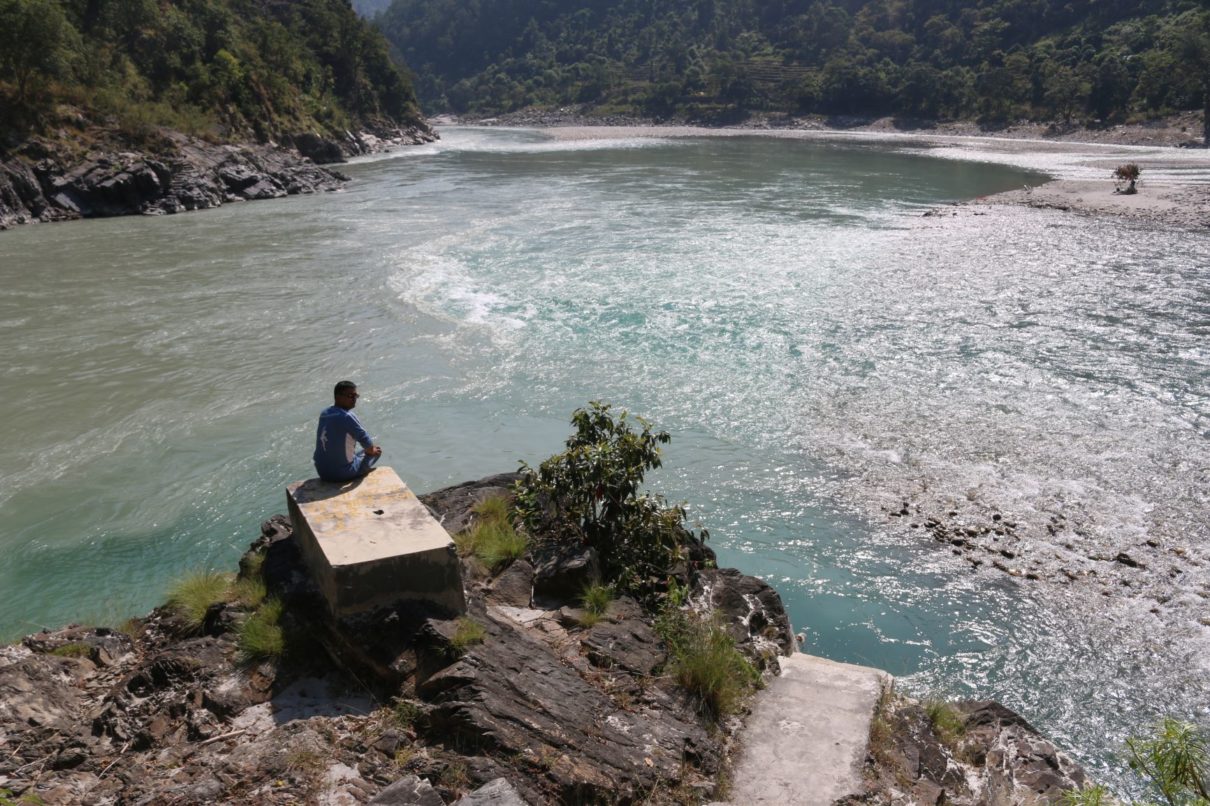That would be hardly surprising in a country where the statue of a native deity, Dolakha Bhimsen, said to have the might of a thousand elephants, sweats every now and then, instilling fear of oncoming disasters, manmade or natural, among the masses.
By the way, in a country where the executive appears like one hell of a disaster at all times, there’s no need for more disasters, even for international humanitarian agencies lodged quite comfortably in Nepal, for there’s a lot to do anyways. Still, the unwelcome guests come in droves, in the form of monsoon floods, landslides, never-ending quakes and their aftershocks, among others. Perhaps the sweating, every now and then, of a super powerful Bhimsen is the result of instability, unbridled policy-level corruption and misrule that has been plaguing this country for generations despite waves of ‘political transformations’ that come and go like seasons in a space of a decade or so, bringing some new rulers but no meaningful change in the lives of the laity. Glimpses of a country mired neck-deep in corruption are everywhere, including in the yearly-published Transparency International’s Corruption Perception Index, where Nepal often fares poorly, getting a paltry 33 or so out of 100 despite decades of ‘epoch-making changes’. Perhaps this continued success in getting a below-par CPI score is the only factor stopping Nepal from becoming a failed state! The Lion Palace, of course, has a huge role to play in this sorry state of affairs. Of the three organs of the state, tyranny is in the DNA of the executive regardless of its shape or form, more so in a country where the judiciary cannot flex moral muscles, owing to transactional relations with the executive. As for the Parliament, it acts as a beast of burden, doing the bidding of a whip-wielding executive, often at the expense of the country and her people. Nepal’s parliamentary history is testimony to the fact that the legislature has become a headquarters of policy-level corruption, thanks to corrupt practices like horse-trading and floor-crossing in times of crucial votes. All this pushes the public onto the streets. Whenever the opportunity arises, the Lion Palace entrusted with the legitimate use of force rides roughshod over civil liberties, making a mockery of cherished ideals like human rights and democracy. Powered by a majority (manufactured or gotten through a popular mandate) in the Parliament, it often tramples on the Constitution, giving two hoots to long-held principles like separation of powers and checks and balances. There’s a long list of policy-level corruption that the Lion Palace has indulged in during the democratic-transformative era that began with the overthrow of the Ranarchy in 1950. The sellout of Nepal’s lifelines, the rivers that have the capacity to change the country for the better, despite protests in the ‘sovereign’ Parliament and on the streets, is a glaring example of such corruption and so is the tweaking of citizenship laws with the intent of bringing about a demographic shift and turning the sons and daughters of the soil into a minority in their own land. Stewing in its own juice under the shadow of a looming Lion Palace, the Themis Palace, especially during the last decade or so, has been unable to make the beast abide by the Charter. In a country with open borders festering like open wounds, the Lion Palace is again seeking to tweak the citizenship law after the sellout of Nepal’s lifelines, a move that will have huge impact on national security, water sovereignty, national sovereignty and the future of successive generations of Nepalis, a move that will leave the provinces and smaller units of the state with precious little to survive on. Notably, this bid to turn a country with a manageable population of around 30m into a wet nurse through a very very controversial bill comes at a time when elections are around the corner. While Themis lies in a vegetative state at this crucial juncture (By the way, does anyone know as to how to invoke the Basantpur-based Kal Bhairav, the deliverer of truth and justice in the good old days, and restore Themis? Or is it possible to instill Kal Bhairav into the Themis Palace itself and infuse life into him through some occult ritual?), another Palace has woken up to the latest threat to our cherished ideals from the executive. Will it be able to rein in the executive? This question looms large at a time when Vijaya Dashami, which marks the victory of Goddess Durga over demonic forces, is around the bend. In the life of every country, there comes a time when the people have to protect their country from a tyrannical government. In our lifetimes, that time has come more than once or twice. What we did in those times is past us. What we do this time will matter a lot. It is quite clear that this government, like many of its predecessors, does not have a will of its own. Foreign visits of self-styled emissaries in the manner of extraordinary renditions and hush-hush deals show that it has scant regard for the core interests of Nepal and the Nepalis, that it is more comfortable with ‘foreign masters’ than it is with the people that it claims to be serving. That means we should be more alert than ever. As some leading light said, eternal vigilance is the price of liberty. May truth triumph once again in this land. May the demonic forces bite the dust, once again. Here’s wishing you all a happy Dashain.











